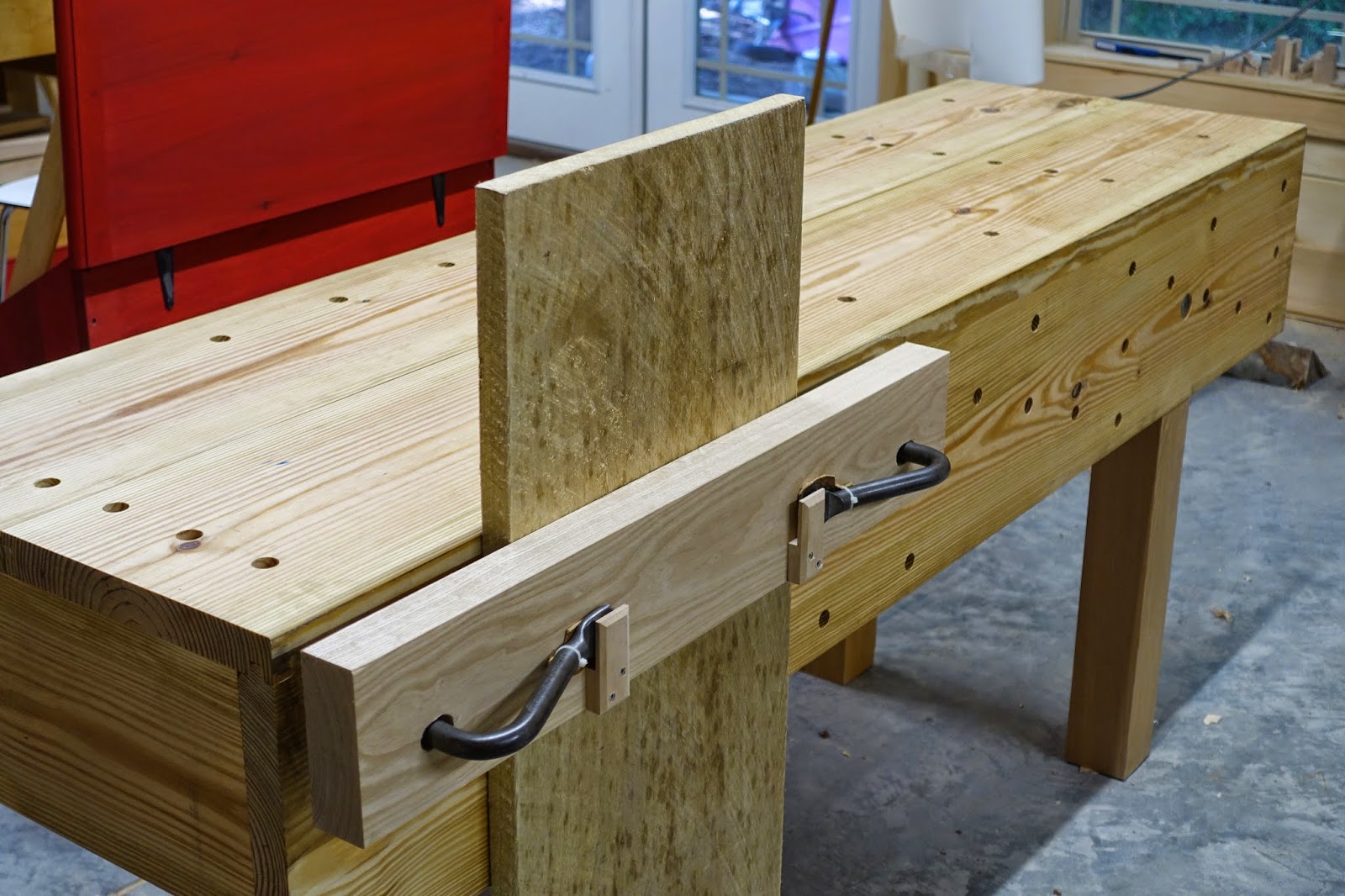I'm interested in making a wooden vice, threadless if possible, for the work bench I'm going to build.
I found this drawing of sort of leg vice that seem to use a wedge and a cam:

It's from http://benchnotes.com/Wedge%20Clamps/wedge_clamps.htm
It said the weighted wedge is operated by a string through the bench top, but I can't work out how this vice works. Any ideas?
I found this drawing of sort of leg vice that seem to use a wedge and a cam:

It's from http://benchnotes.com/Wedge%20Clamps/wedge_clamps.htm
It said the weighted wedge is operated by a string through the bench top, but I can't work out how this vice works. Any ideas?











